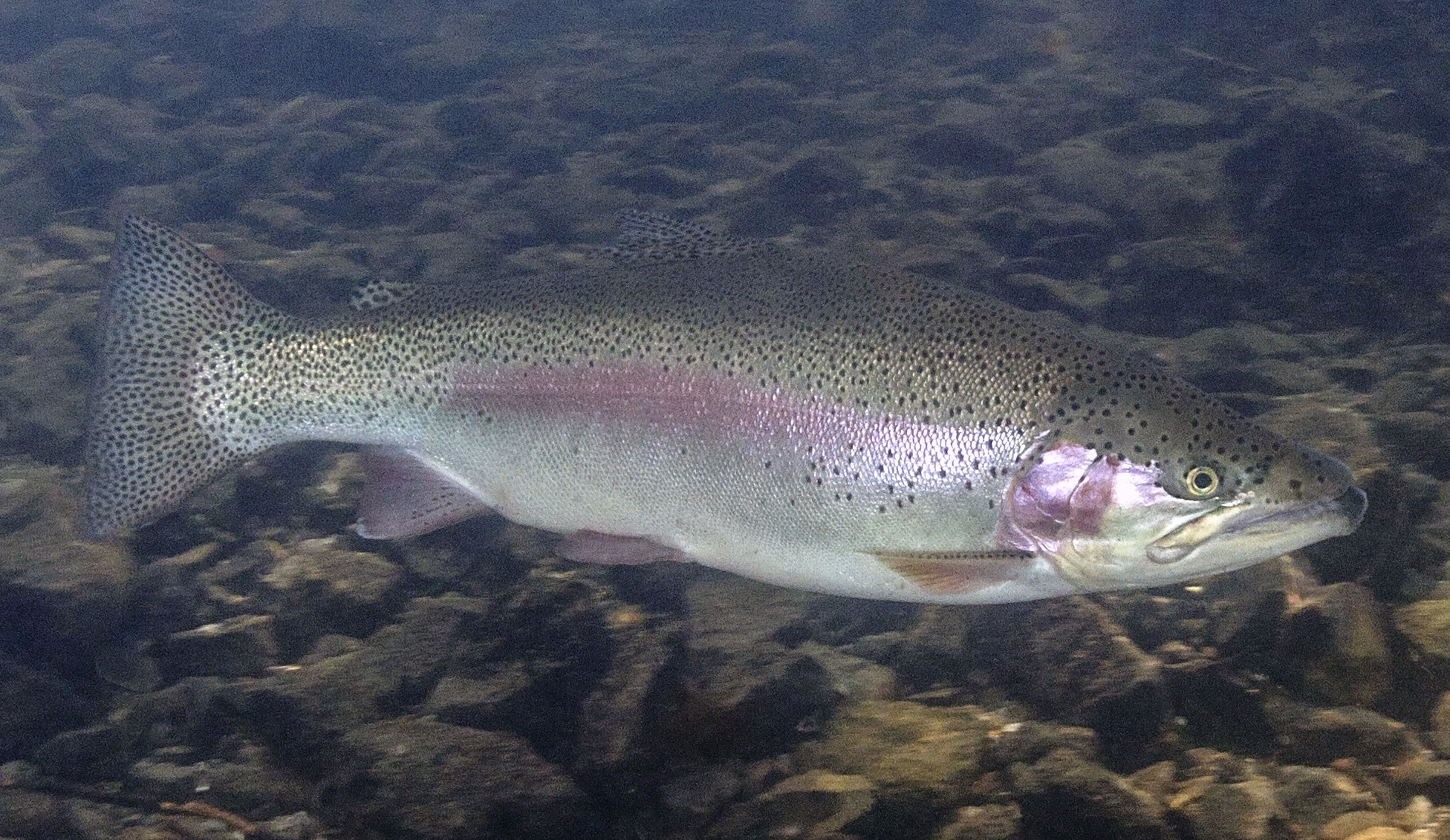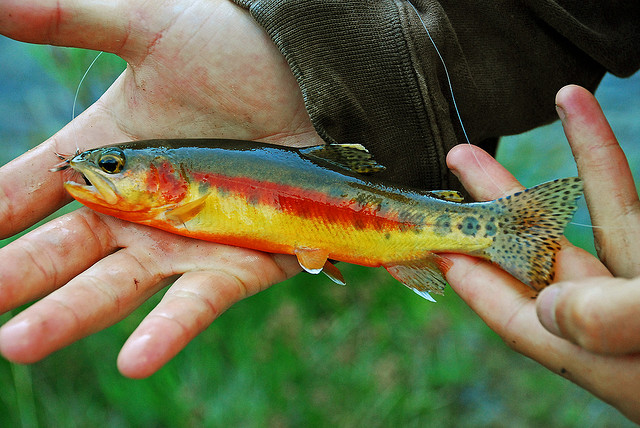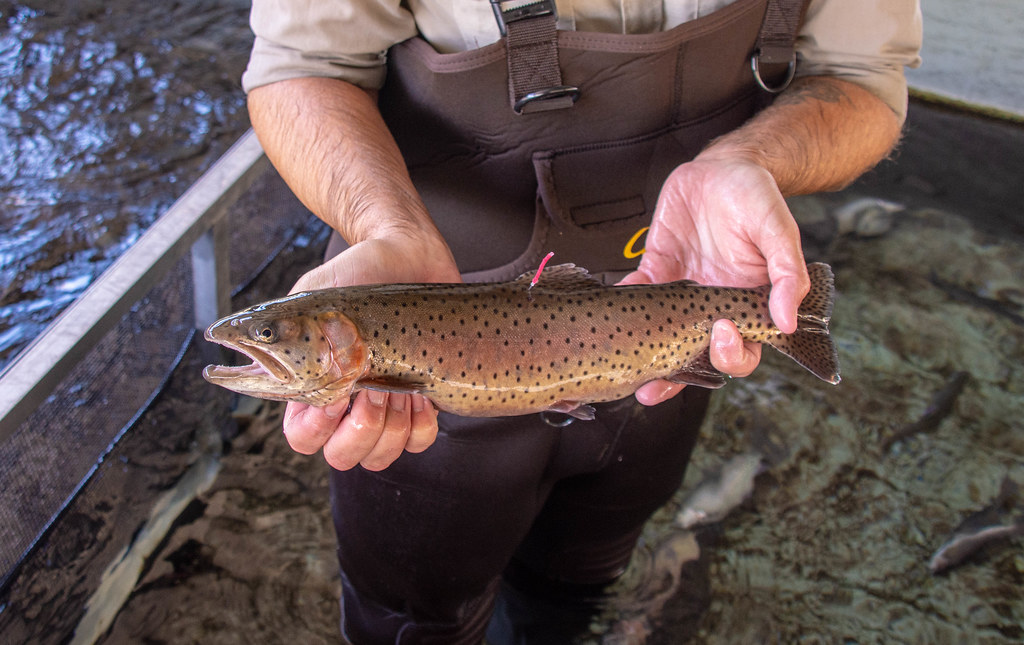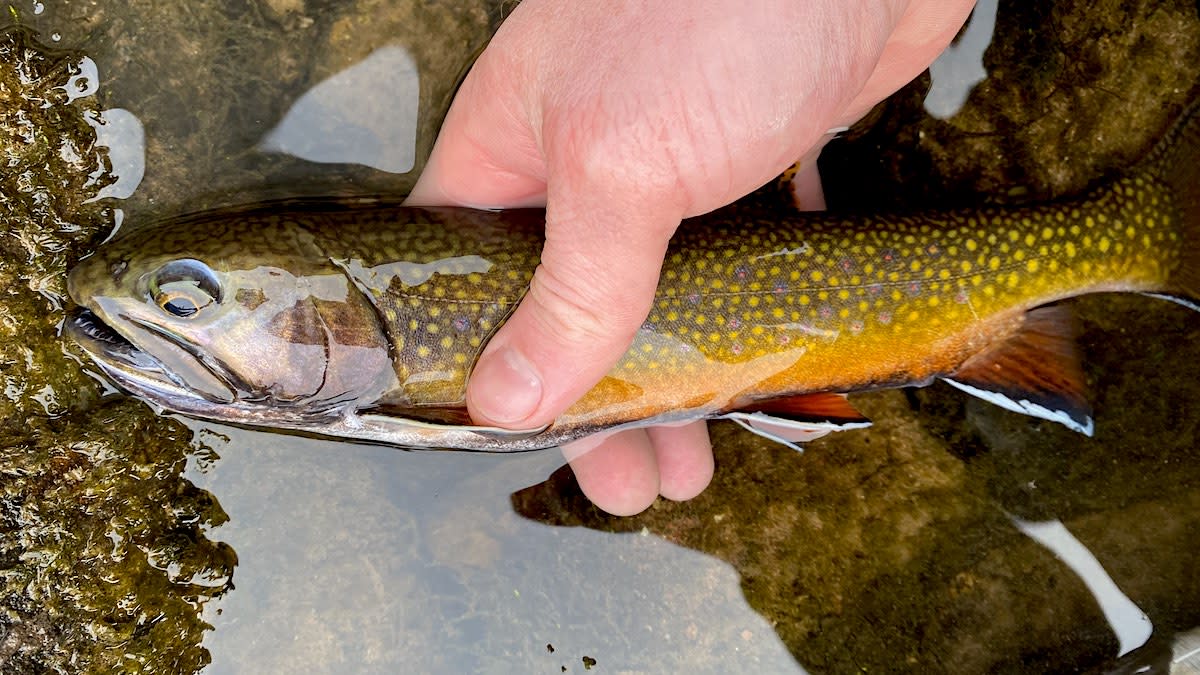Fishing season in Mammoth Lakes is in full swing, which means that you still have plenty of time to cast a line in one of the most beautiful spots in the world. And whether you’re an experienced angler or just starting out, you’ll want to know what kinds of fish you can expect to catch up here in the Eastern Sierra.
Let’s take a look at some of our area’s fish species as well as where you’re likely to find them!
Rainbow Trout

Rainbow trout aren’t only some of the best looking fish in the area, but they’re also the most common. Chances are, if you catch something in the Lakes Basin, it’s going to be a rainbow, as these fish are regularly stocked.
These trout are easy to identify. They’ve got a greenish body with a vibrant reddish or pink stripe down the side. Their spots run down the length of their body and tail.
Crowley Steelhead
Technically, the Crowley Steelhead is not its own species. Rather, it’s the name we’ve given to very large rainbow trout that migrate into the Owens River just north of Crowley Lake during the spawning season.
The spring spawning season has already passed, but even if you missed it, you’re in luck. Steelheads spawn a second time in the fall, so you still have a chance to catch one of these behemoths.
California Golden Trout

Golden trout are another gorgeous fish with a name that says it all. They have a shimmery golden body with a red stripe running along the side and a dark green back. You can also identify them by their spots, which are larger and darker than on their rainbow cousins.
Goldens tend to be on the smaller side, only about 8 to 12 inches in length. But don’t let their size deter you. Catching a golden trout feels like finding real gold! In fact, these fish are so special that they’ve been named the official freshwater fish of California. And, if you want to find them, you’ll have to work for it. Goldens are happiest in cold, high elevation lakes, ideally above 10,000 ft. But, you might be lucky enough to find them at Crystal Lake (trailhead starts at Lake George in the Lakes Basin)
Cutthroat Trout

Lahontan cutthroat trout, or Lahontan cutties, are an endangered species that are known for being powerful and clever. They’ll look slightly different depending on whether they’re found in a lake or stream, but in general, you can identify them by their subdued pink or copper band that runs down the side of their bodies. The name cutthroat refers to their distinctive red marking under the jaw.
Lahontan cutties can sometimes be found in Crowley Lake, but you don’t have to leave Mammoth to find these elusive beauties. McLeod Lake, which can be accessed via Horseshoe Lake, is well-known for being home to cutthroat trout.
Brook Trout

Brookies are another common species of trout you’re likely to find in the Eastern Sierra. They’re easily identified by their so-called vermiculation pattern, which is a complicated way of saying that the spotting along their back looks like worm markings.
Brook trout, as you’ve probably guessed, like to hang out in flowing water like brooks, streams, and creeks, such as Mammoth Creek and Sherwin Creek. But you can also find them in a variety of lakes around the Lakes Basin, such as Skelton, Arrowhead, Barney, and Heart Lakes.
Brown Trout

When it comes to trout fishing, brown trout seem to have their own separate fan-base, probably because browns are most active during late-season (and fishing in the cold definitely takes some next-level commitment!)
These big, burly fish are not native to the Eastern Sierra, and they’re more likely to inhabit deeper, colder waters. That’s why, if you are lucky enough to catch a brown trout, it’s probably going to be a big one! They spend most of the summer hiding out and getting big at the bottom of the lake.
You can find brown trout in most of the lakes around Mammoth, including Twin Lakes and Lake Mary. They’re also quite common a bit further south in Convict Lake and Crowley Lake. You’ll be able to identify them by their rich brown coloring, as well as their distinctive spotting. While most trout have spots, brown trout spots have light-colored rings around them.
It’s not just about the trout!
Clearly, there are quite a few trout species in Mammoth Lakes. In fact, catching one each of the four main species—rainbow, golden, brook, and brown—is called a Sierra Slam. But, we do have other types of fish in the area! Here are a few:
Owens Sucker
As you probably guessed, the Owens sucker is a native fish to the Owens River, and is especially abundant in the stretch between Crowley and Bishop. It’s also been introduced to June Lake and Convict Lake.
This relatively small slate-colored fish is nocturnal, so don’t be surprised if you don’t catch one even over many years of fishing the Owens. But, they’re an important part of our natural ecosystem!
Sacramento Perch
Perch fishing is a popular pastime, especially on Crowley Lake. Sacramento perch may not be native to the area, but fishermen love that they’re there. Firstly, because they make for some very satisfying fishing. And secondly, because their fry make for an excellent food source for trout (leading to monster trout!)
Ready to become a High Sierra Angler?
You’re in good company! The families, couples, and groups of fishing buddies who visit us every year are some of the nicest people on the planet! So, you’re bound to brush shoulders with some friendly folk while you’re casting your line at Lake Mary, McLeod or Mammoth Creek.
And, with a free fishing day (July 5th and August 30th, 2025) right around the corner, you’re right on time to try out this amazing outdoor activity.
Book Your Vacation Rental
Need the perfect condo to relax after a long day of fishing? Take a look at what we have available at Mammoth Mountain Reservations. We look forward to your visit!
